Optional: listen text-to-speech using the voices already in your device
This feature makes use of the Text-To-Speech capability as you have it already installed and configured on your own device. You will see that there are some voices that are not so good, choose from the list if you have a chance.
In Rome, the admired and beloved capital of the Roman Empire, all the relevant civil infrastructures were built, because being the origin of the Empire, it was the main place to show off the advanced Roman technology and the luxuries that the citizens of the Empire enjoyed. Visitors were amazed by its power, its buildings, its services… and, therefore, the city was the main element of promotion of the Roman Empire.
In the conquered territories, the construction of different infrastructures was also undertaken, which gave the provinces their “Roman identity”, such as amphitheaters, temples, etc. However, there is one element that was the backbone of Roman culture that had a direct impact on the well-being of the citizens of the Empire: water.
The easy access to water allowing its daily use undoubtedly meant a paradigm shift in most of the conquered territories. The massive use of water in fountains, baths, hot springs, etc. was made possible through the construction of infrastructure not only to bring water to the cities, but also to dispose of it in an orderly manner. Aqueducts are an example of the former, and sewage and drainage networks of the latter. Compared to the presumably poor hydraulic infrastructures prior to the arrival of the Roman Empire, the inhabitants of the conquered territories must have perceived an improvement in their quality of life. The abundance of running water increased public health and reduced diseases related to stagnant water.
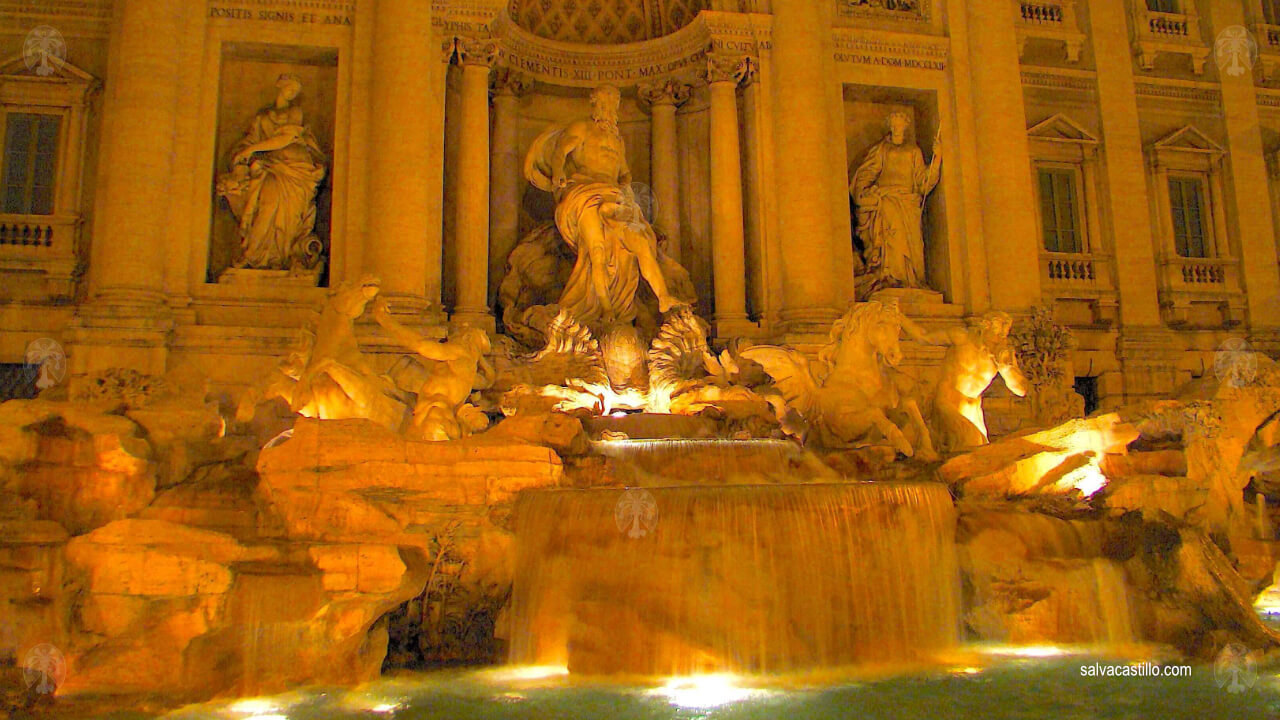
Indeed, the use of water and its canalization was one of the most powerful tools of the Roman Empire to consolidate its dominion over the conquered territories. The Romans transformed arid or underdeveloped territories into much more habitable places, using water as a tool to make the new provinces of the empire more attractive and functional, gaining the sympathy and cooperation of the local populations. Making monumental works also had a propaganda effect by showing the power and greatness of Rome.
Water, in the Roman context, also had an important cultural component. The creation of public baths, monumental fountains and thermal baths not only satisfied a basic need, but also promoted social life, hygiene, and cultural integration. These spaces were meeting places, where people not only bathed, but also conversed, conducted business, or participated in recreational and religious activities. Through water, Rome also changed a model of life that fostered cohesion and loyalty to the Empire.
Monumental fountains, therefore, respond to a deep-rooted tradition of Rome with deeper effects and purposes than the mere supply of drinking water. Water is imbued with the identity of a city built around the Tiber River.
Fontana di Trevi
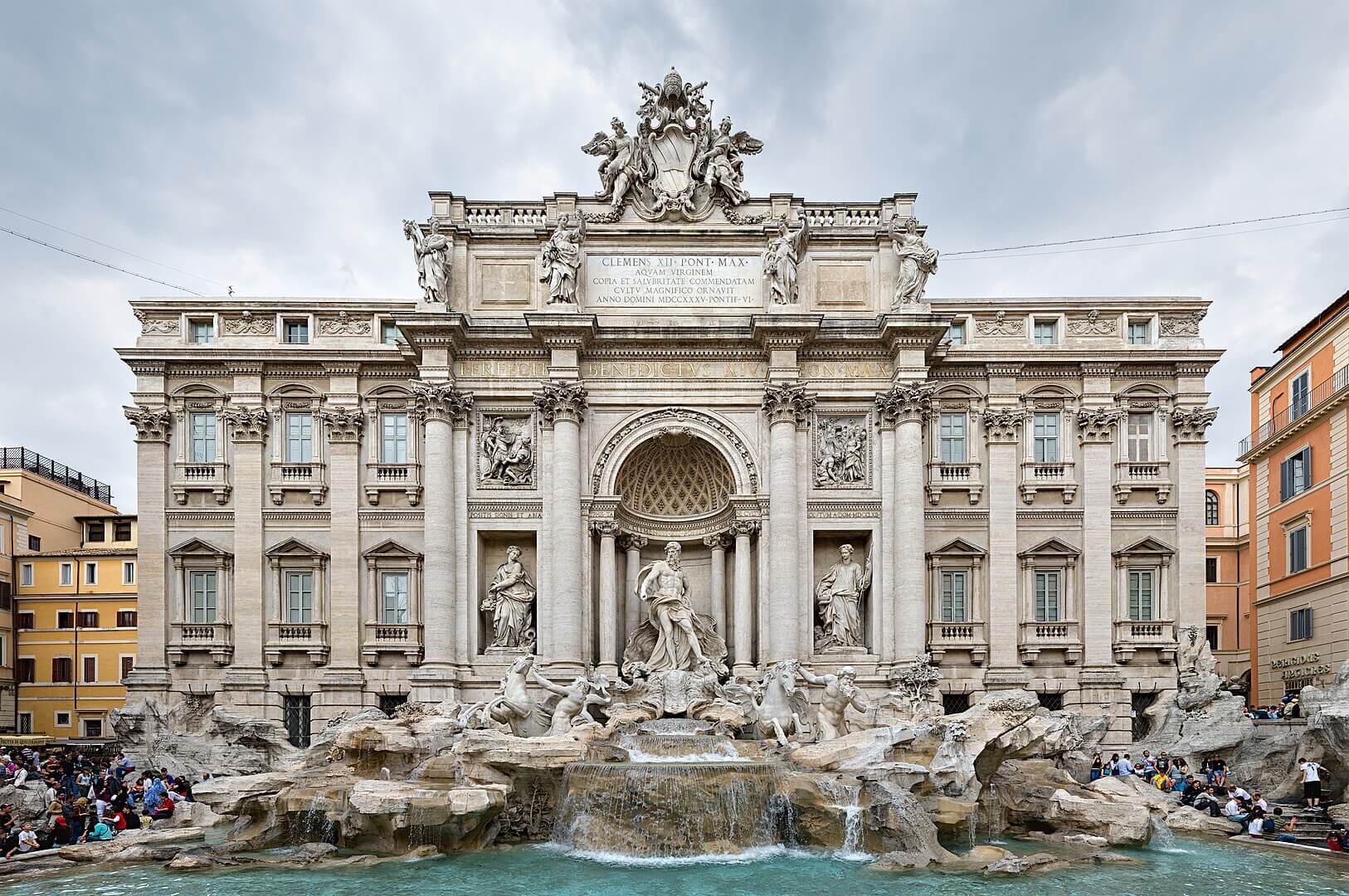
The Fontana Di Trevi was commissioned by Pope Clement XII in 1730, designed by architect Nicola Salvi in 1732 and completed in 1762 by Giuseppe Pannini. This majestic baroque fountain, almost 50 meters wide, is located in Piazza di Trevi, and its name comes from the word “tre vie” as three streets flow into the square.
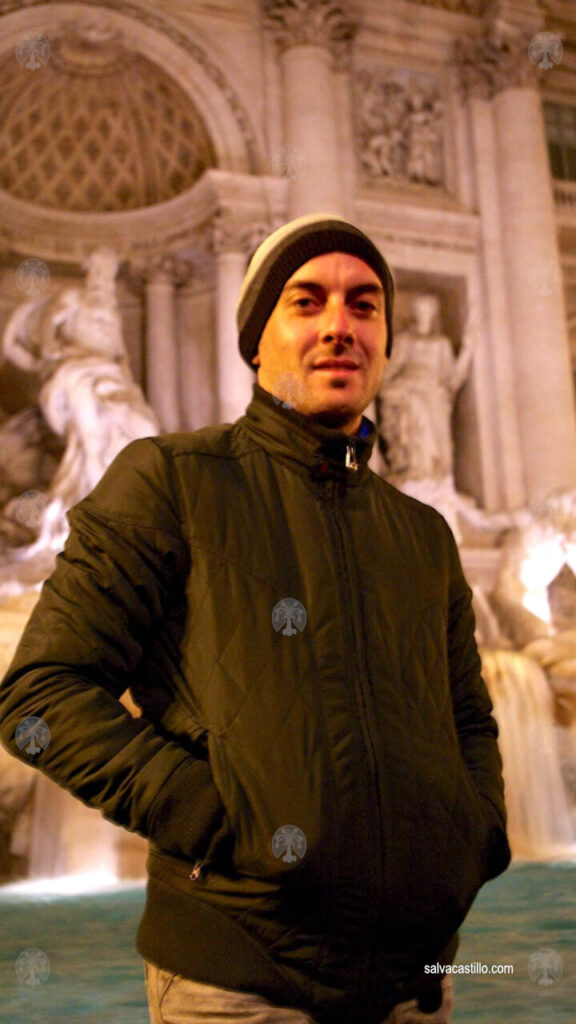
In the center of the fountain stands the figure of Neptune, the god of the sea, on a shell-shaped chariot pulled by two sea horses. These horses, one calm and the other agitated, represent the two states of the sea: calm and storm. Neptune, with his trident in hand, is surrounded by several allegorical figures, such as Abundance (holding a horn of plenty) and the goddess of Health, who reinforce the symbolism of the fountain as a representation of the harmony between man and nature.

The fountain marks the end point of the Aqua Virgo, one of the 11 aqueducts that supplied Rome.
A very popular aspect of the Trevi Fountain is the tradition of throwing a coin into the fountain. According to legend, tossing a coin with the right hand over the left shoulder ensures that the visitor will return to the eternal city. This custom attracts thousands of tourists every year, and it is estimated that, annually, several thousand euros are collected from the fountain, which are donated to charities.

Piazza Navona
Piazza Navona is one of the most beautiful and emblematic squares of Rome, famous for its oval shape, which is due to the structure of an ancient Roman stadium built in the first century AD under the emperor Domitian.
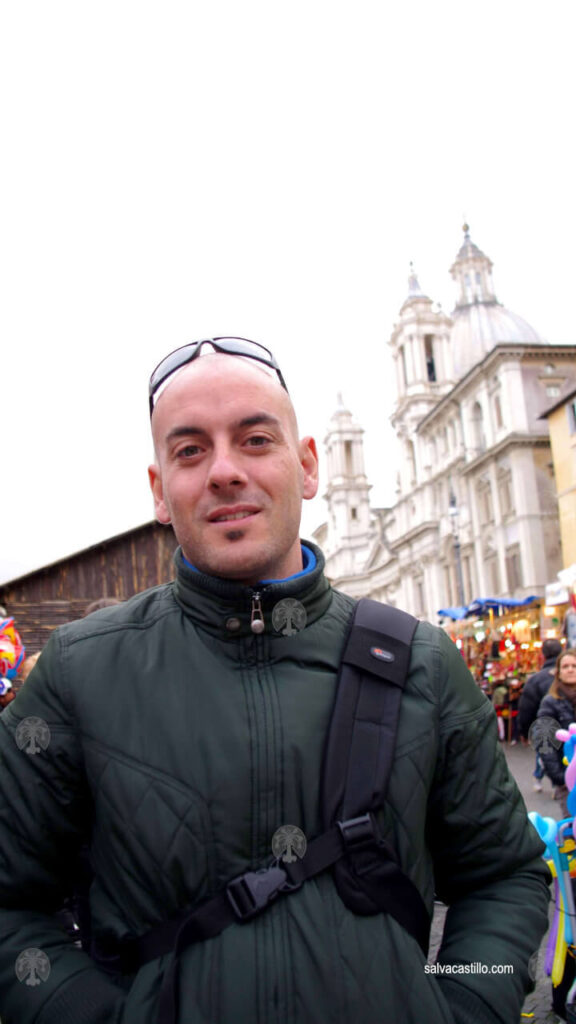
This stadium was used for sports competitions and had a capacity for more than 30,000 spectators. Over time, the stadium was dismantled, but the square kept its original form, becoming a meeting place for the Romans.
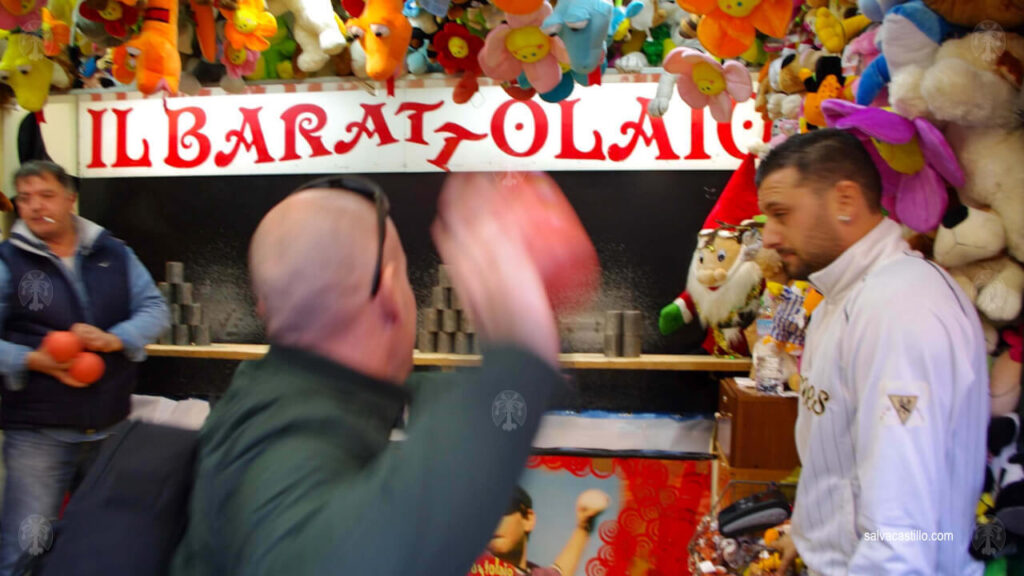
Fontana dei Quattro Fiumi
In the center of Piazza Navona is the famous Fontana dei Quattro Fiumi (Fountain of the Four Rivers), one of the most impressive fountains in Rome, designed by Gian Lorenzo Bernini in 1651. This fountain represents the four great rivers of the known world at that time: the Nile (represented with its head covered, as its source was unknown at the time), the Danube (with an arm extended towards Europe), the Ganges (with a crown of flowers and a boat) and the Rio de la Plata (with its hand raised in an attitude of defense).
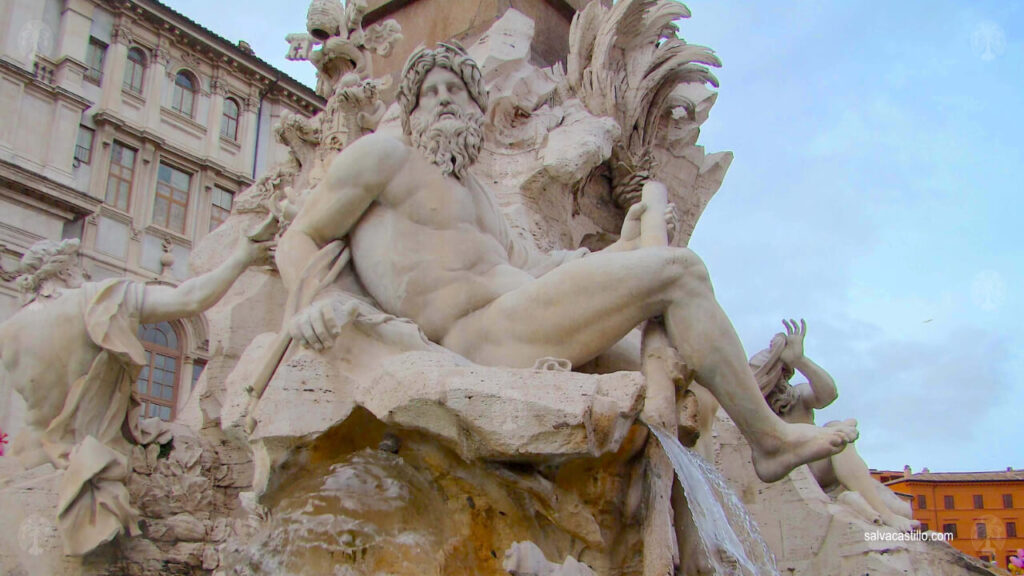
Each river is accompanied by a symbolic animal that reinforces the identity of the river represented: the lion for the Nile, the dolphin for the Danube, the dragon for the Ganges and the horse for the Rio de la Plata.
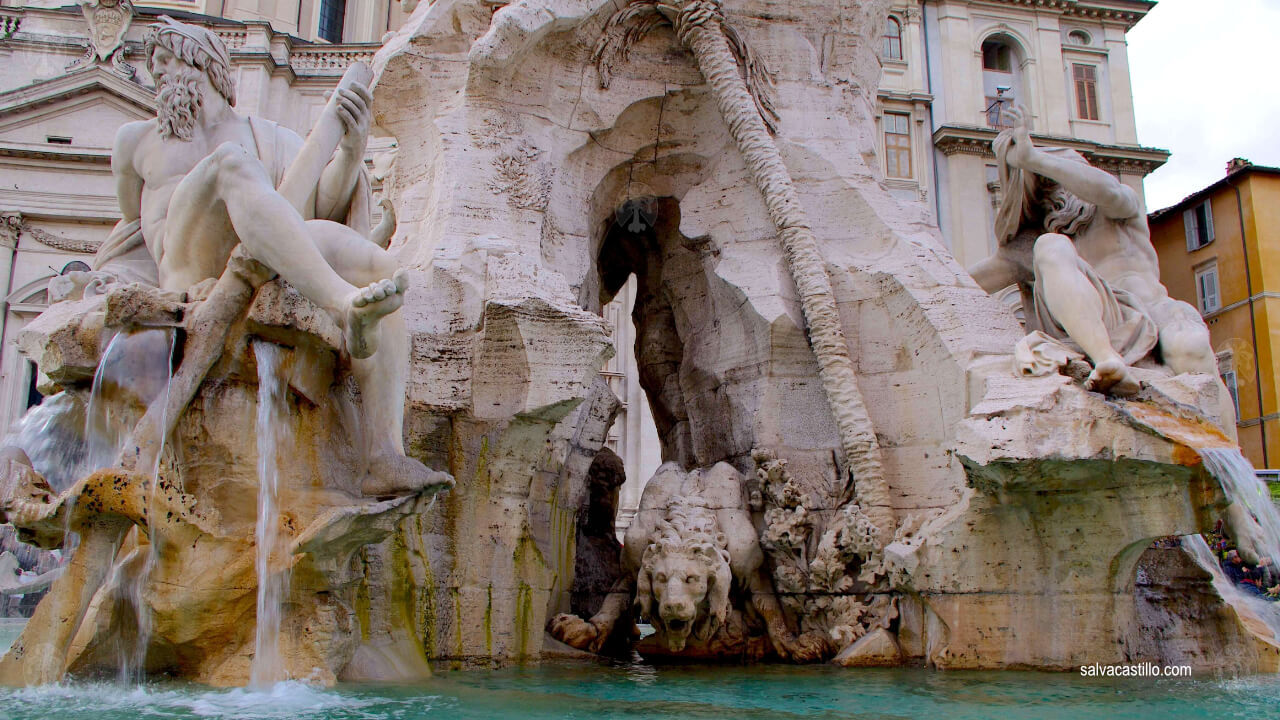
In the center of the fountain stands an Egyptian obelisk almost 17 meters high, originally erected in Heliopolis, Egypt. It was moved to Rome in 358 AD by Emperor Constantius II, who placed it in the Circus of Maxentius on the Via Appia. However, in 1651, during the papacy of Innocent X the obelisk was moved to its present location as the center of the sculptural ensemble. The papal coat of arms is prominently depicted on the base of the obelisk.
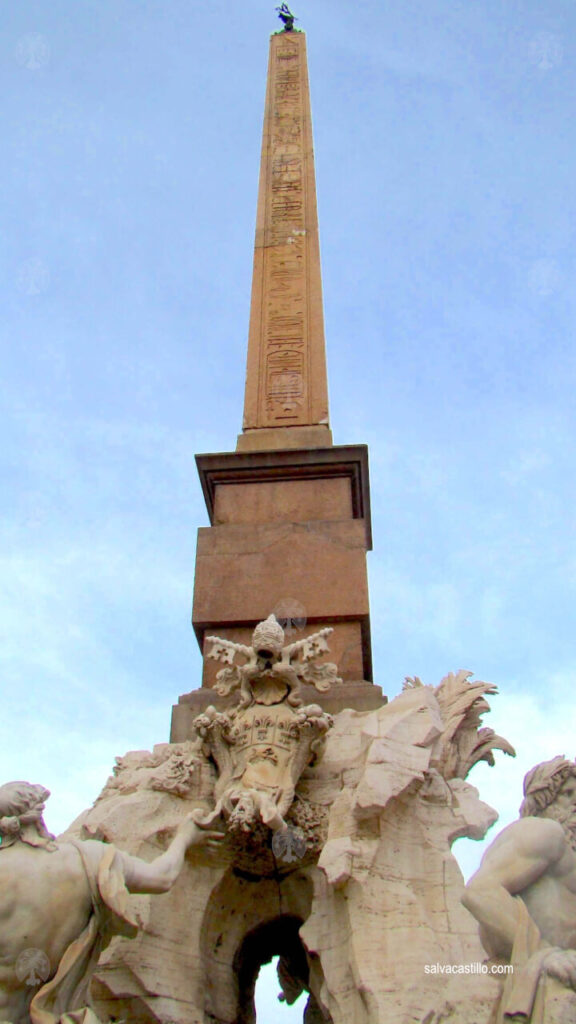
It carries a strong symbolism: the obelisk represented the connection between divine power (associated with Egypt and the pharaohs) and the earthly power of the Pope, who used it to underline his universal influence. In addition, the obelisk is decorated with hieroglyphs referring to the victories of the ancient pharaohs, and has become a symbol of the fusion between Egyptian antiquity and the revival of Roman art in the Baroque.
The church of Sant’Agnese in Agone (with its papal coat of arms clearly visible), of baroque architecture, is located on one side of the square, adding even more elegance to the space.
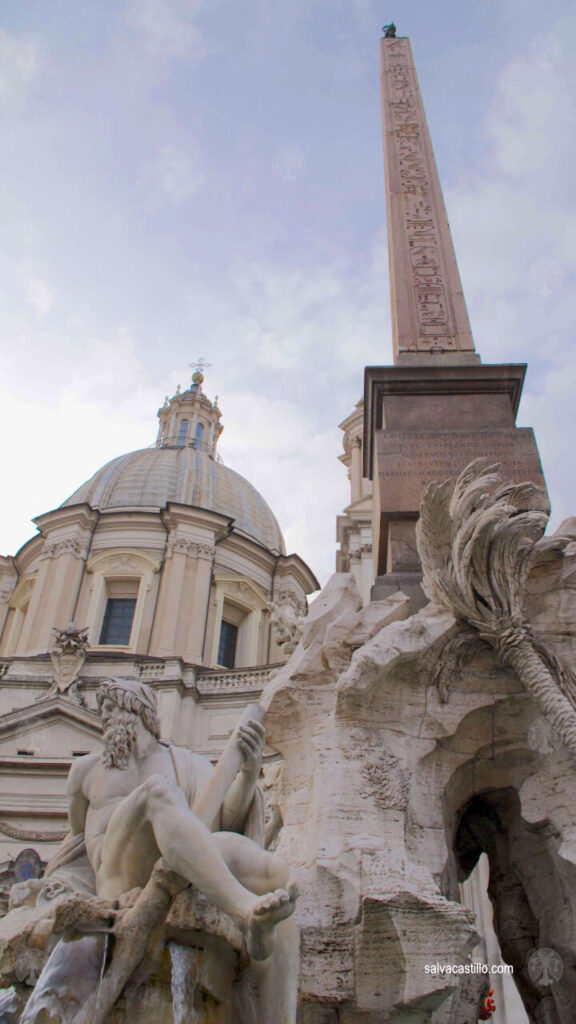
Fontana del Nettuno
The Fontana del Nettuno (Fountain of Neptune) is located on the north side of Piazza Navona. It was designed by architect Giovanni Antonio Mari, although the sculptural part was completed by Antonio Della Bitta and Francesco Molinary in 1878, long after construction of the fountain began in 1574.
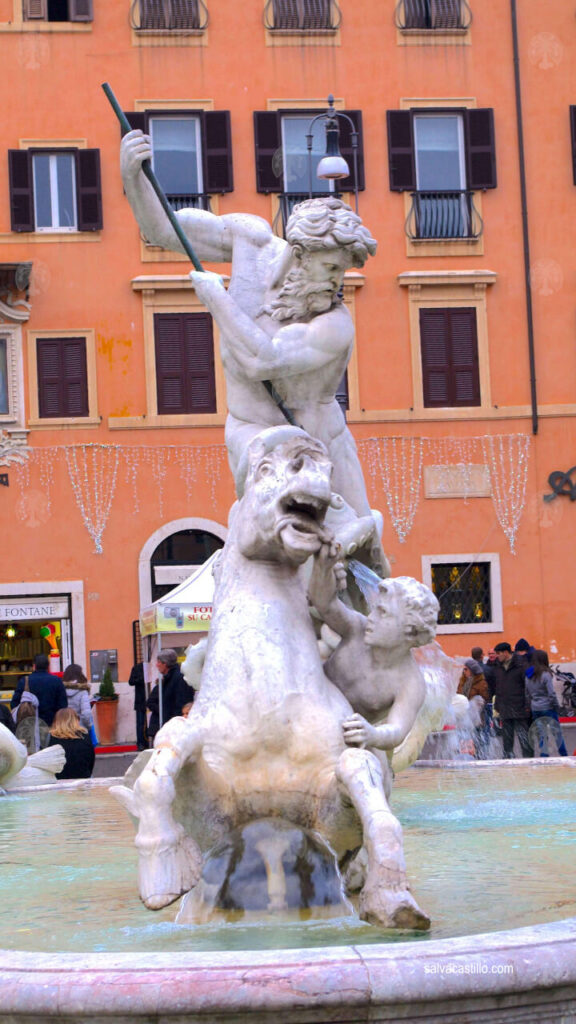
The central figure of the fountain is Neptune, the god of the sea, shown in a dominant pose, holding a trident while surrounded by a group of tritons and sea creatures.
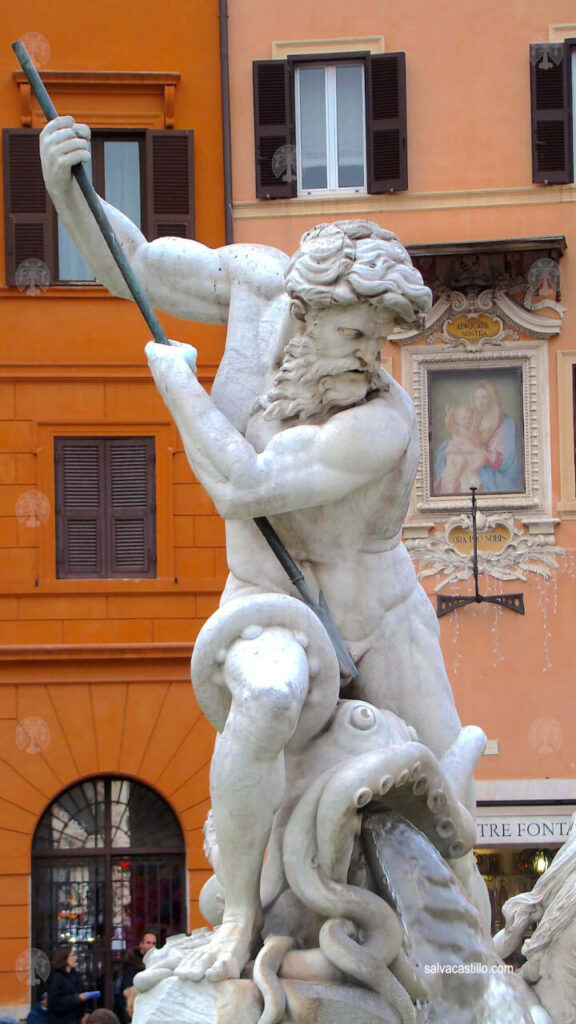
Fontana del Moro
The Fontana del Moro was designed by the architect Giovanni Fontana in 1575, although the sculpture that decorates it was made later by Carlo Maderno and Bernini in the seventeenth century.
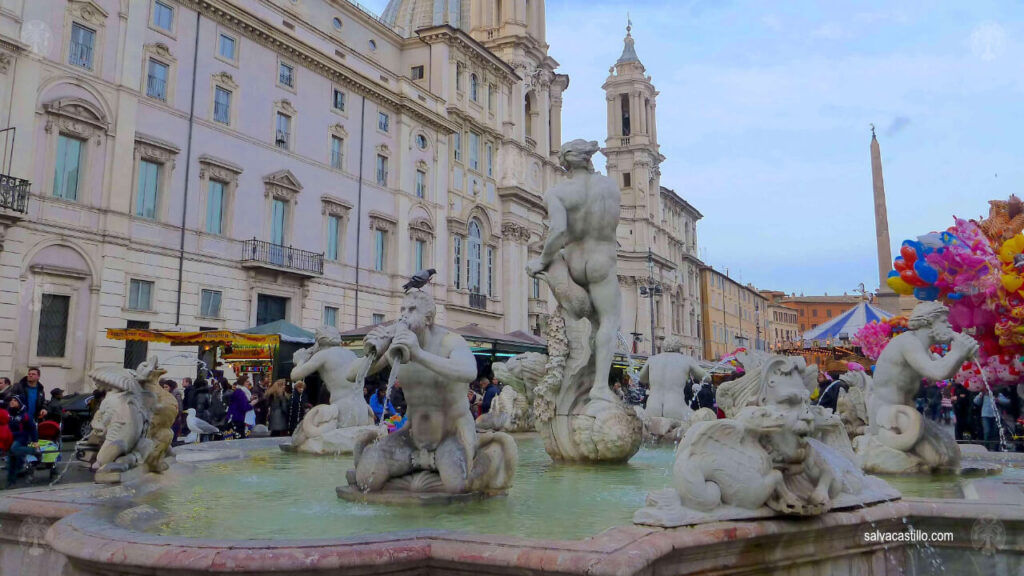
The central element of the fountain is a figure of a Moor (moro, a man of African origin) holding a dolphin, while surrounded by several other dolphins and aquatic figures.
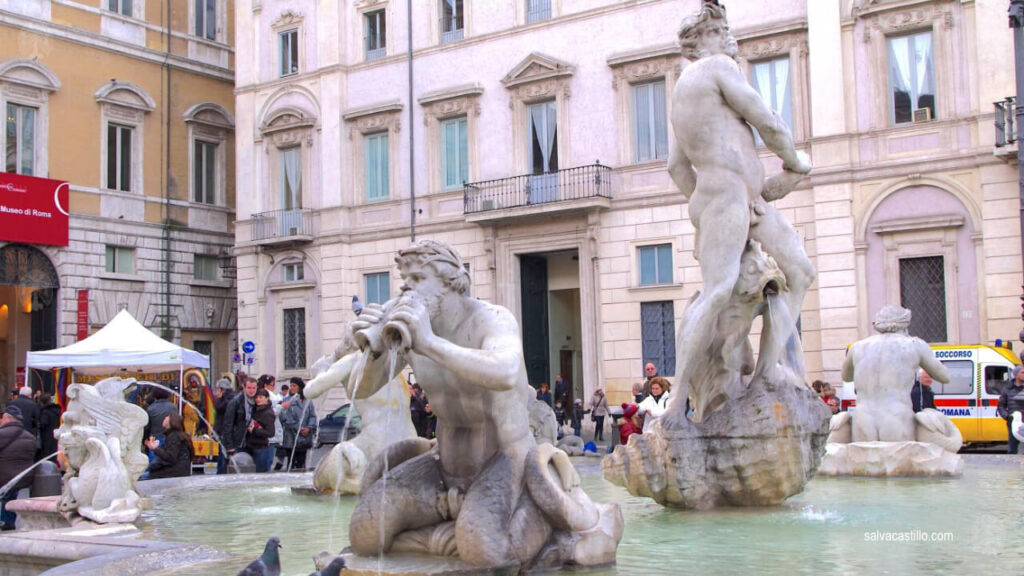
The Moor, which is one of the most characteristic images of the fountain, symbolizes the control of water and Rome’s connection with the Mediterranean and the eastern world.
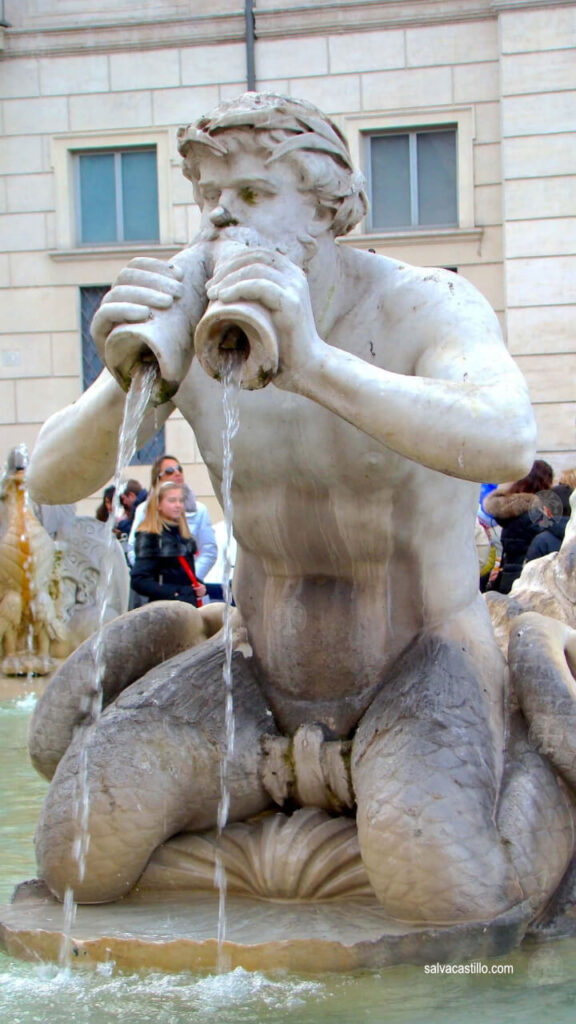

In 1653, Bernini intervened in the fountain by incorporating the dolphins, which intertwine in a dramatic arrangement around the Moor, bringing more dynamism and a sense of movement to the whole.
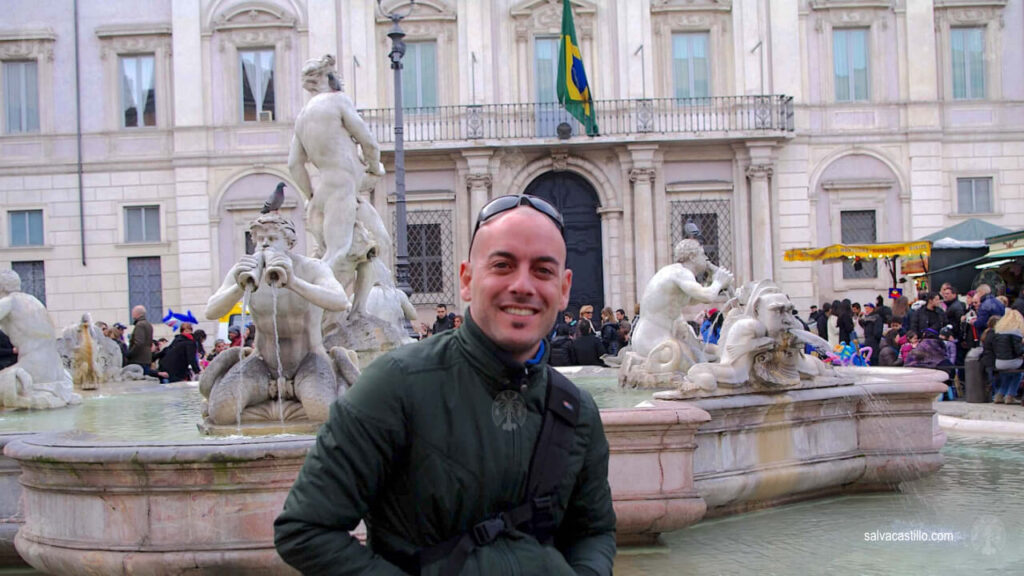
Fontana della Barcaccia
The Fontana della Barcaccia, located in Piazza di Spagna in front of the famous steps of Trinità dei Monti, is one of the most charming and peculiar fountains in Rome. It was designed by the architect Pietro Bernini, father of the famous Gian Lorenzo Bernini, and completed in 1627.
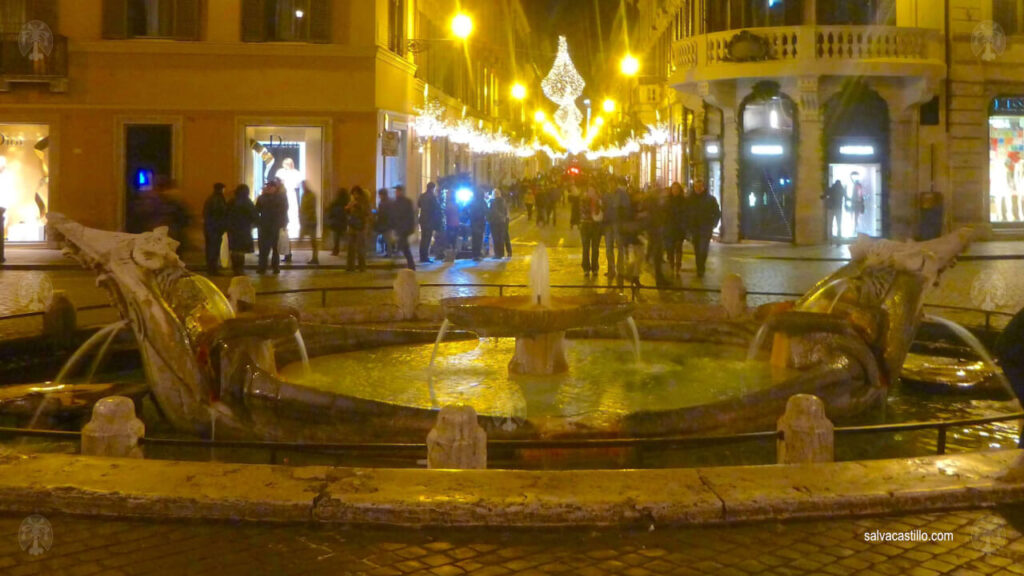
Its design is inspired by a half-sunken boat, a reference to a historic flood that occurred in Rome in 1598, when the Tiber River overflowed its banks and left a boat stranded in the square. The boat, made of marble, has a pair of water figures emerging from its edges, giving the illusion of water flowing from the boat into the square.
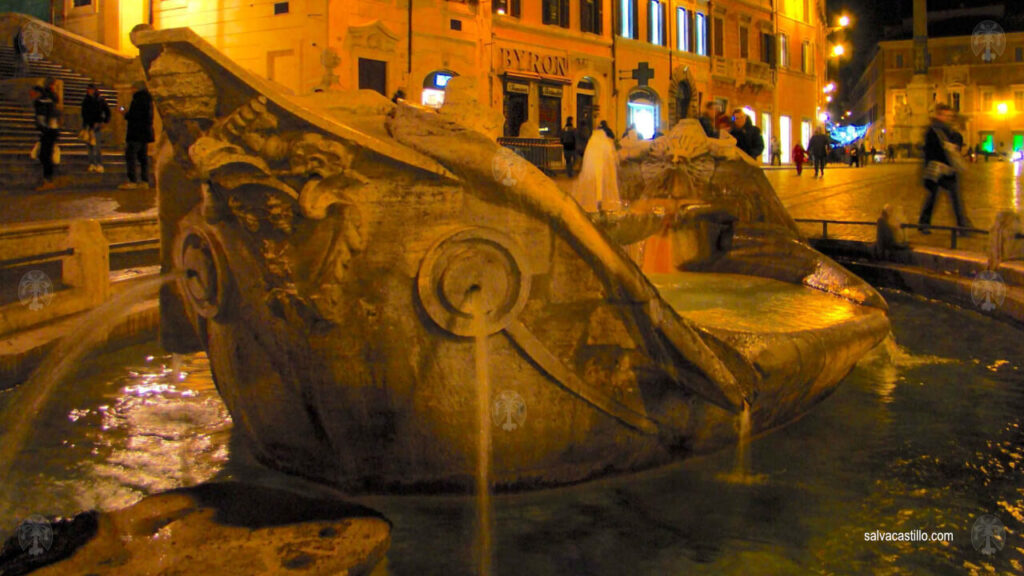
Fontana delle Tartarughe
The Fontana delle Tartarughe (Fountain of the Turtles) is a small but fascinating work of art located in Piazza Mattei, in the heart of the old Jewish quarter of Rome. This fountain was designed by the architect Giovanni del Della Porta in 1581, and its name comes from the four figures of turtles that adorn the fountain, placed on the edge of the structure in the eighteenth century by the sculptor Antonio della Bitta.

It is said that the turtles in the fountain, placed on the edge in an almost playful pose, were designed to give the impression that the sea creatures were about to jump into the water, creating an effect of dynamism despite their relatively small size.
Fontana di Piazza della Rotonda
Immediately after the restoration of the Aqua Virgo aqueduct, completed in 1570, work began on a secondary subway branch of the conduit to reach the area of the ancient Campo di Marte, one of the most densely populated areas of Rome. In 1575, Giacomo Della Porta also designed the fountain in Piazza della Rotonda, whose sculptural realization was entrusted to Leonardo Sormani.
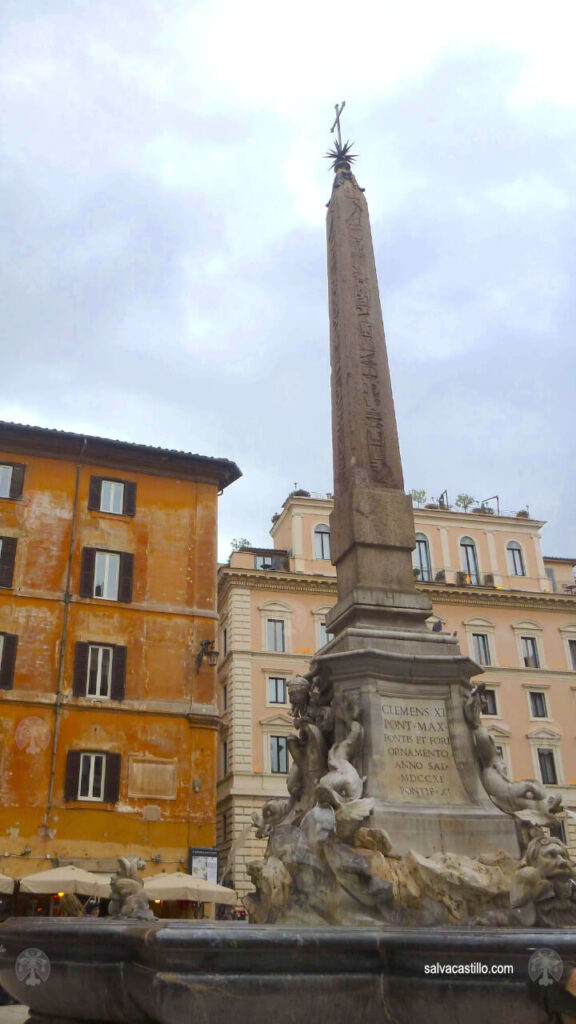
In 1711, Pope Clement XI ordered a radical restoration of the fountain: the basin was removed and replaced by a set of rocks and dolphins supporting a small Egyptian obelisk from the time of Ramses II -about 5.5 meters high-.
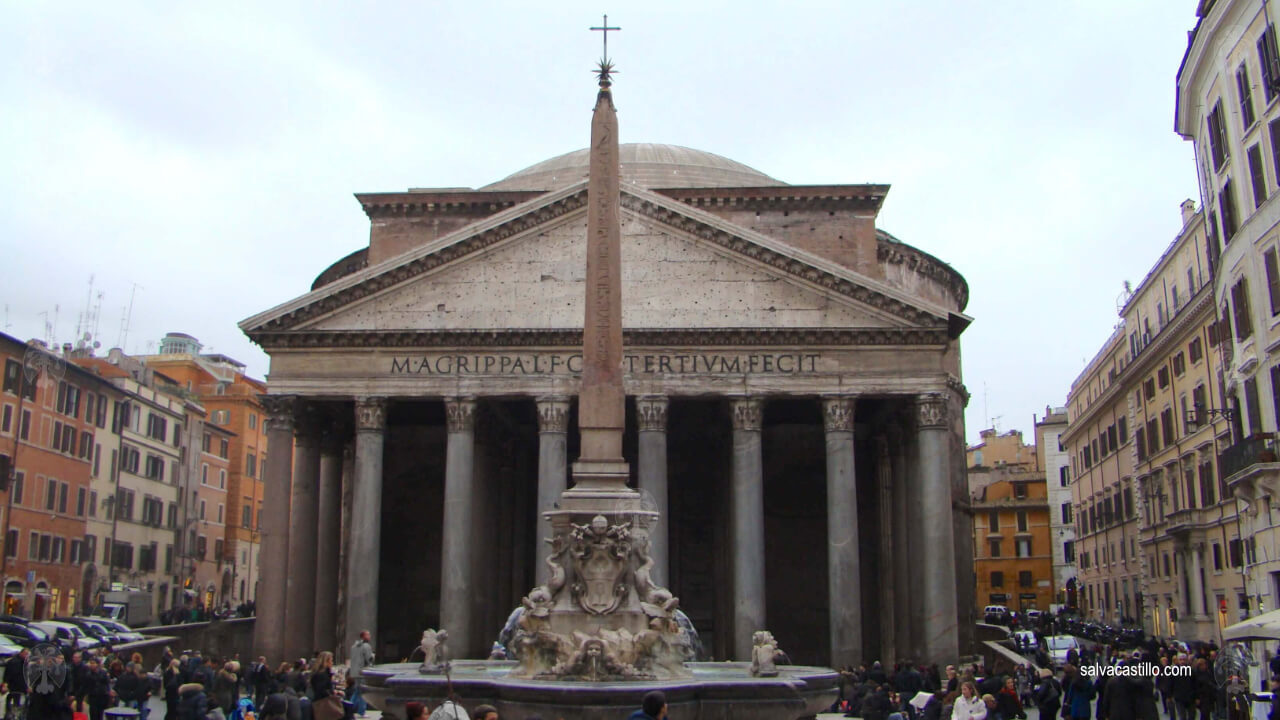
The Pantheon of Agrippa, possibly the finest building of antiquity
The Pantheon of Agrippa is a majestic temple dedicated to all the gods of the Roman pantheon. Its original construction was commissioned by the general and politician Marcus Agrippa in 27 BC as part of an ambitious project to beautify the city. However, the Pantheon we know today was rebuilt between 118 and 125 AD during the reign of Emperor Hadrian, after the original building was destroyed by fire. Hadrian himself decided to give credit for the building in the inscription on the portico: M-AGRIPPA-L-F-COS-TERTIVM-FECIT (Made by Marcus Agrippa, son of Lucius, consul for the third time).
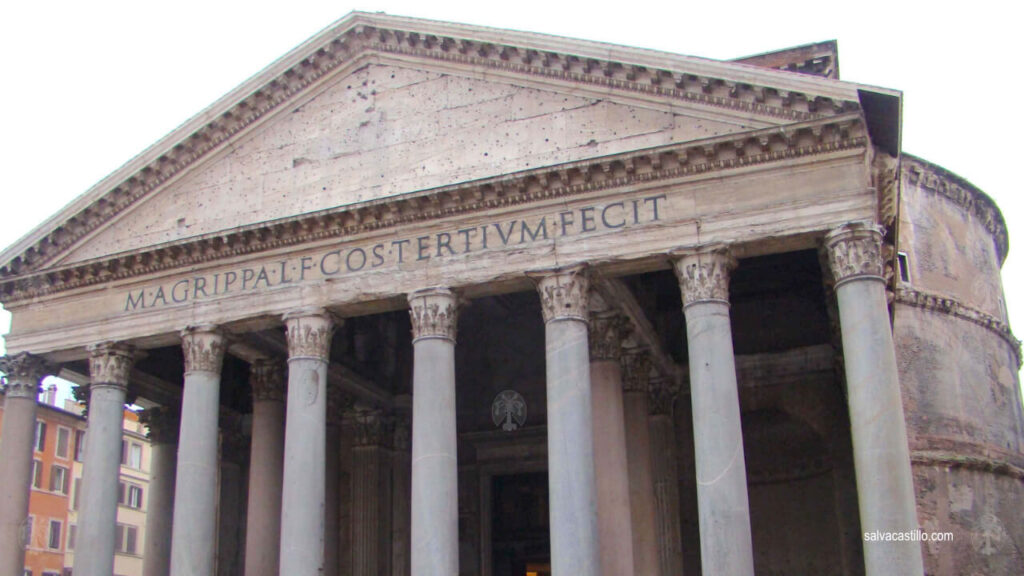
At the front of the Pantheon there is a portico of 16 Corinthian columns of Egyptian marble of 13.5 m., arranged in two rows. The columns at the front are 8 monolithic columns, while the other 8 form an inner row, creating a structure that extends in a rectangular shape.

The Corinthian form of the columns, characterized by elegant capitals adorned with acanthus leaves, is a distinctive element of imperial Rome. The portico has a trapezoidal façade, which contributes to the overall symmetry of the Pantheon. The arrangement of the columns not only seeks to give a sense of harmony and order, but also serves as a transition between the exterior of the temple and the vast circular space of the interior floor plan.
The interior of the Pantheon is organized so that, upon entering, the visitor feels that he or she is in an infinite sphere. The perfect symmetry between the circular floor plan and the dome, together with the radiant arrangement of the columns, create a space that seems to expand into infinity.
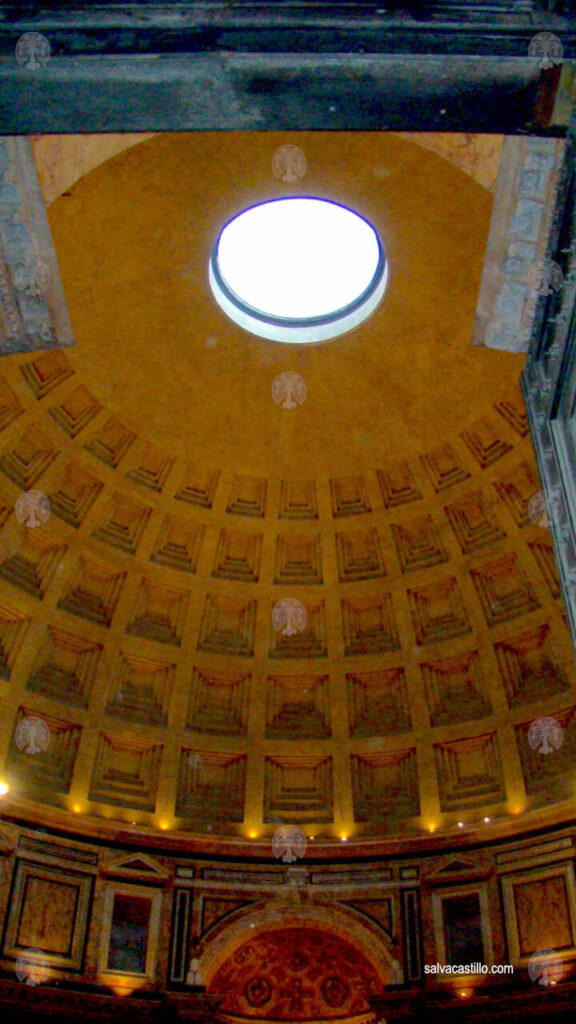
This sense of immensity is reinforced by the absence of columns or barriers within the space, allowing a clear and open view of the dome, creating a sense of wholeness.
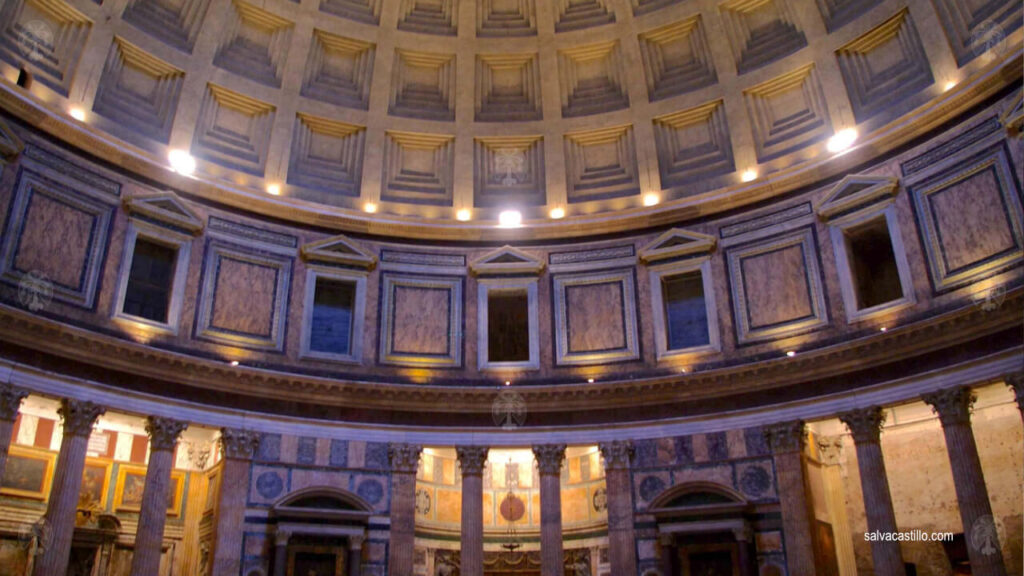
The dome of the Pantheon covering the cylindrical nave has a diameter of 43.3 meters, which coincides exactly with the height from the floor to the center of the oculus at the top of the dome. This relationship creates a perfect hemisphere representing the sky, which extends into the interior space,
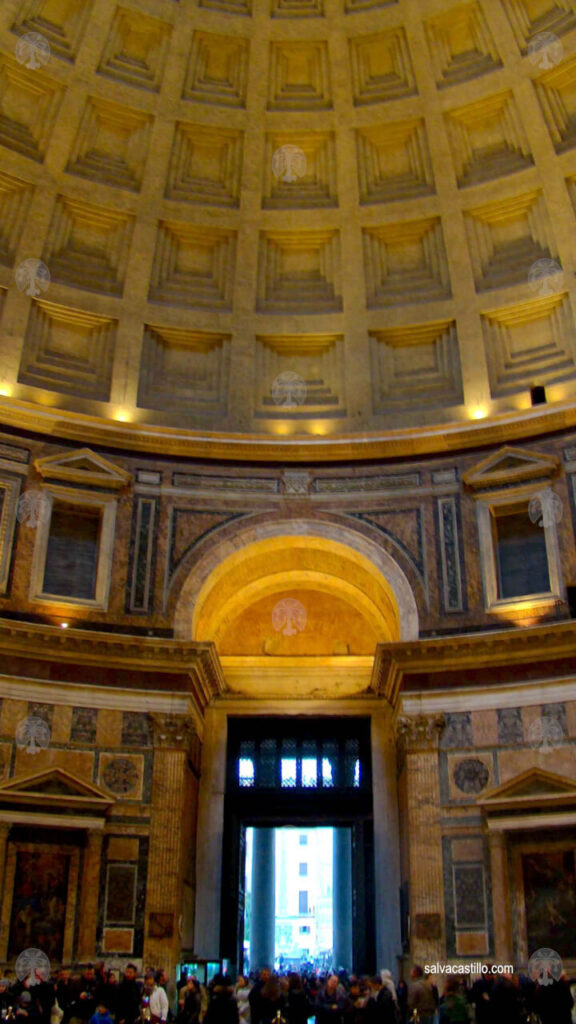
And why are there architects who say that the Pantheon is the best building of antiquity? -at least, of those that are preserved-. It is true that everyone will have their own tastes, and there will be those who advocate the Ziggurat of Ur (more than 4000 years ago) or the Pyramids of Egypt (~ 2600 years). Unfortunately, some other great constructions of antiquity are no longer standing, like the Temple of Artemis or the Library of Alexandria, for example. Or the Parthenon, which is in tatters.
Well, they say it is because of its architectural singularities, the materials used and the innovative engineering solutions that were developed in its construction. Exempli gratia, the entire structure is made of concrete, and to reduce the risk of collapse of the dome, the cross section of the dome becomes narrower as it increases in height. In other words, the thickness of the dome is greatest at the base and reaches its minimum at the oculus. Moreover, the trapezoids that seem to be excavated on the interior face are not only ornamental, but also serve to lighten the total weight that has to fly over the nave. Thus, without reinforcements, the dome can support its own weight, which is in itself astonishing.
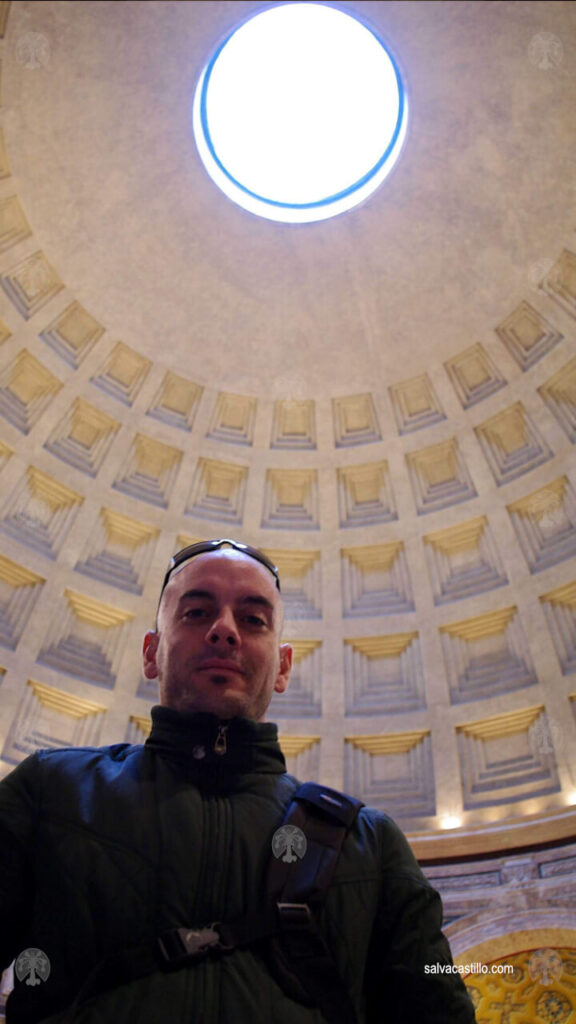
The key here is the weight distribution along the dome structure, which is supported by the external walls of the building. Although the concrete is not reinforced (i.e., it does not have the rebar structures within it) of course when it sets it generates a single structure, without separation. Thus, the entire Pantheon is actually a single body, making it the largest concrete building by mass in the world.
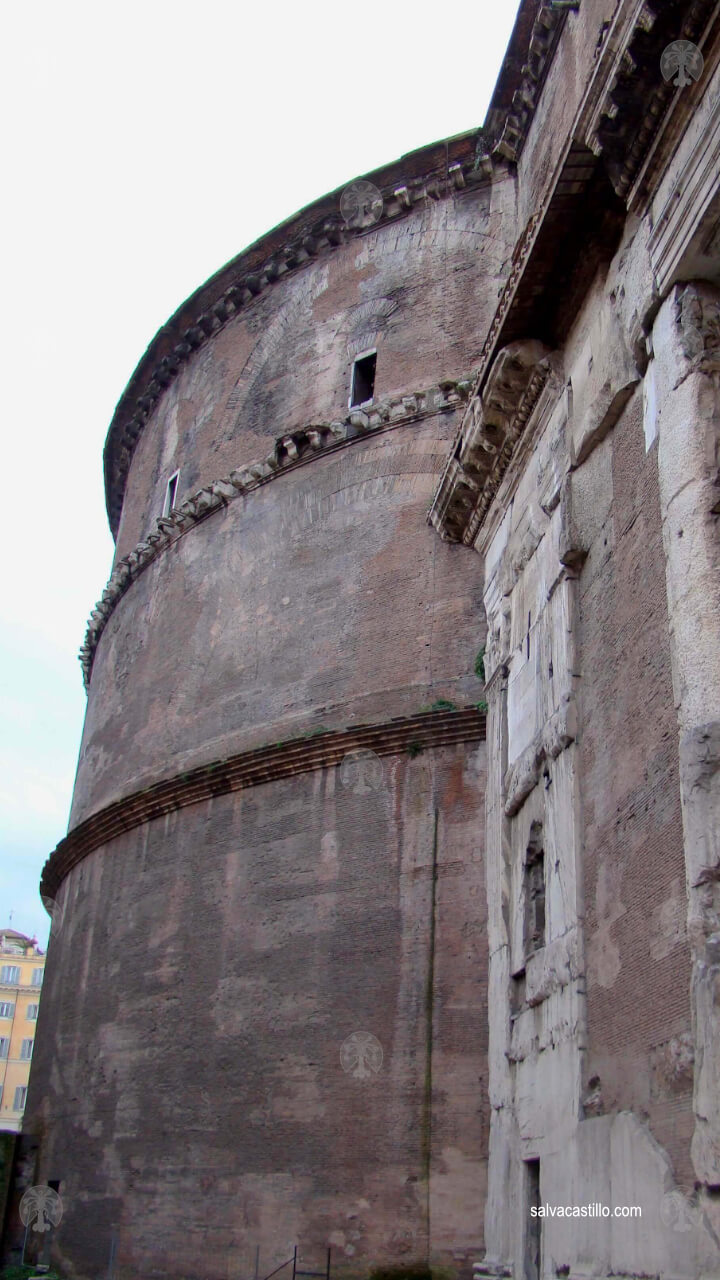
The oculus has a diameter of 9 meters and is the only point of entry of natural light into the building. Its function is not only to illuminate the interior, but also has a deep cosmic symbolism. During the summer solstice, sunlight enters directly through the oculus and illuminates the entrance of the building. This celestial alignment shows the ability of Roman architects to integrate the movement of the sun and other astronomical elements into their designs. In addition, without the oculus, the structure would have had to be reinforced in another way to support the weight of the dome, which would have complicated the design and possibly reduced the elegance of the building.
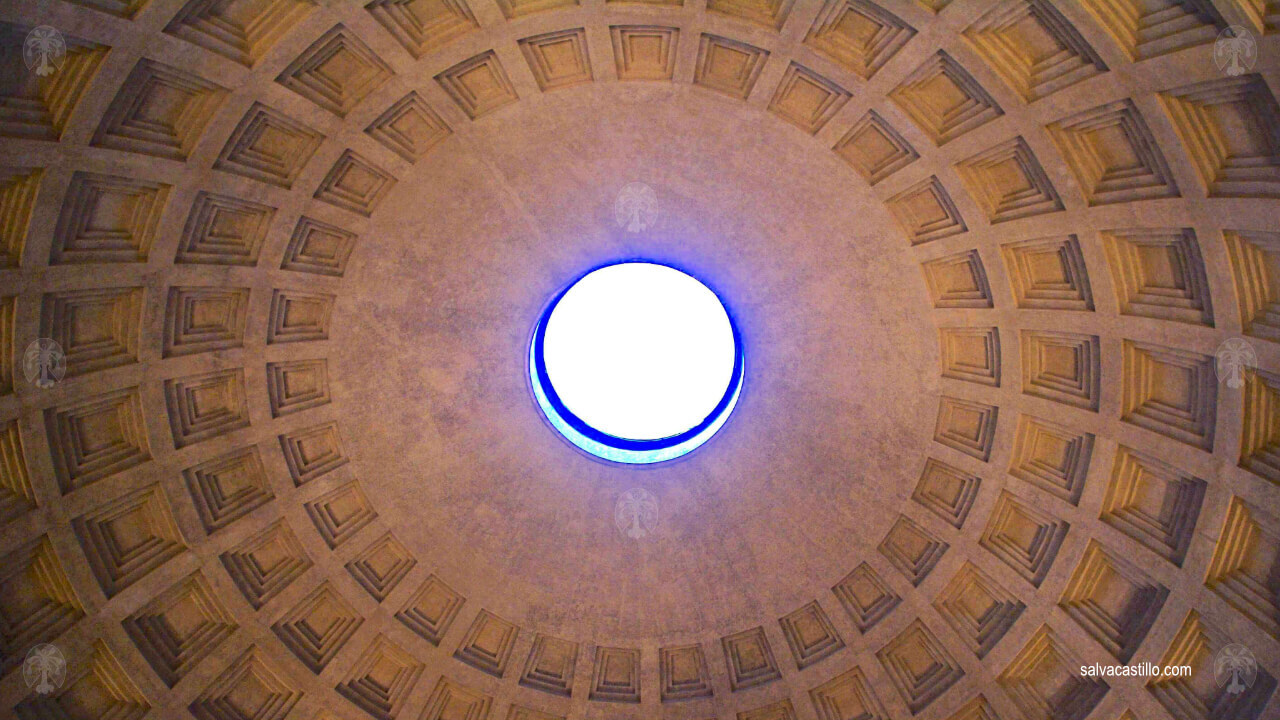
Through the oculus not only light enters, but also water. The rain. The storms. The entire interior of the building is exposed through that hole in the peak. But the floor of the building – and also the dome – is designed to channel and drain the incoming water. Through a series of hidden drainage channels, the water is directed to the outside of the building. Thus, the Pantheon establishes an eternal dialogue with light and water through its oculus without being disturbed by it.
In its majesty, the Pantheon is also the resting place of several important figures, including Vittorio Emanuele II, the first king of Italy, and Raphael Sanzio, the Renaissance painter.
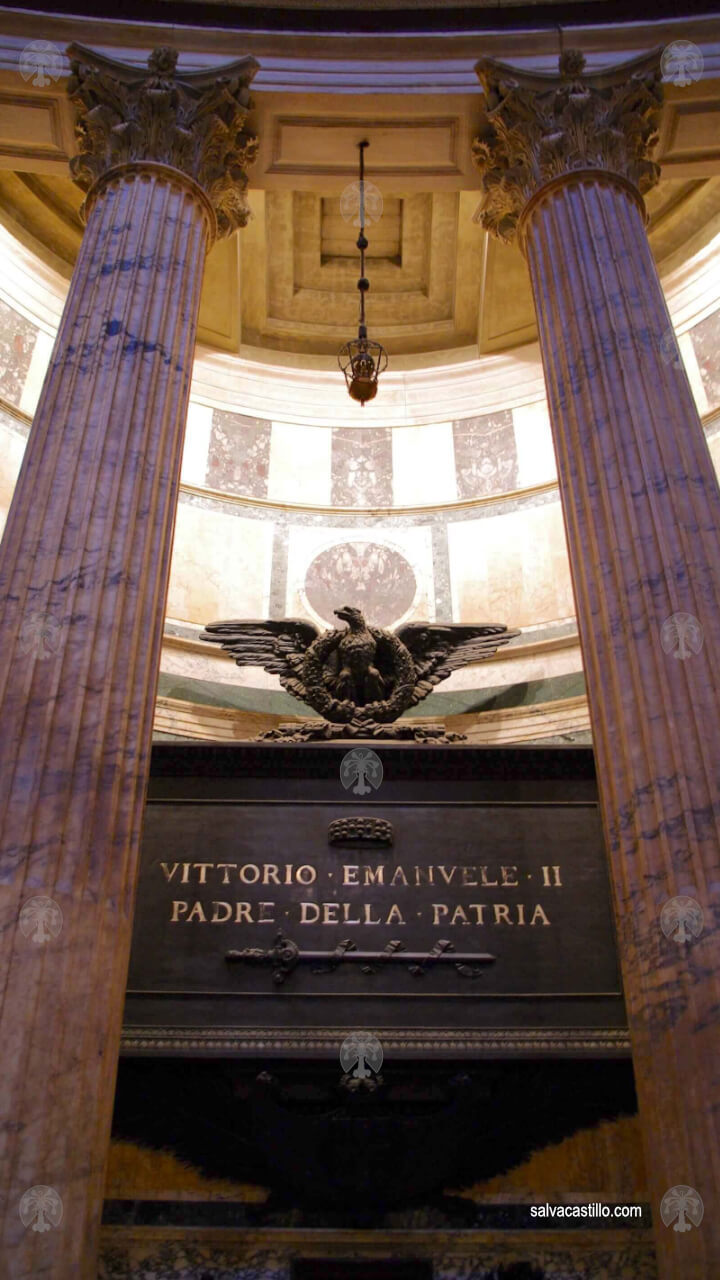
Some people say that if you could only see one building in Rome, you should choose the Pantheon. Truly, it is impressive.